Wild West Photos That Reveal a Completely Different Reality
Actual Unseen Wild West Photos Revealed After 130 Years
While the Wild West is best noted for Cowboys and Indian standoffs, railroad wars, battles of lands and lawmen who frequently took things into their own hands, not much is known about the average citizen’s life during this time.
There were farmers, homesteaders, laborers and hardworking housewives to name a few that are hardly noted. Click NEXT to see rare photos of what civilian life was like in Wild West.
The Real Cowboy
Considered one of the most realistic photographs depicting a real cowboy, this image taken by miner John C.H. Grabill is iconic for the cooling cloth neck wrap and leather chaps he wears.
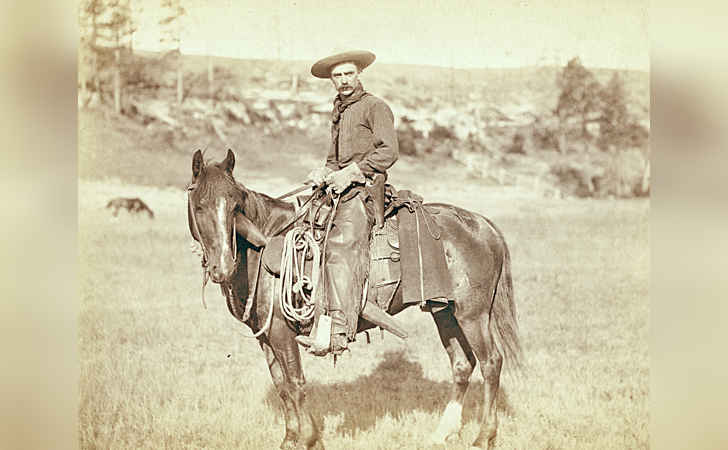
John C. H. Grabill/Wikipedia
This photo is a real treasure due to its high quality and composition. The horse and the cowboy stares into the camera and allow us to peer back into another era.
A Game Called Faro
Most people take what they see in western films as truth. When it came to saloon card games, cowboys didn’t actually play poker but rather a game called Faro, a which was created outside the US.
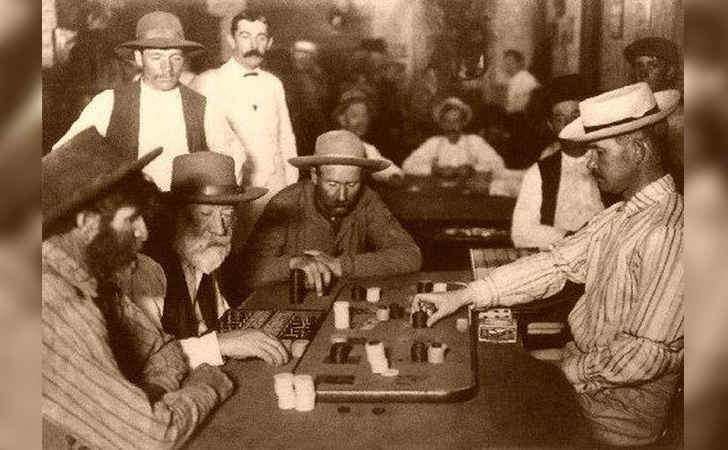
Faro (Card Game)/Wikipedia
This photo captures a group of men gathered around a table playing the game of Faro. All of them see deeply into what the other player will do next.
Rose of Cimarron
Rose Dunn’s (aka Rose of Cimarron) fascinating story lives on in this photo. She was introduced to what would become her husband, George “Bittercreek” Newcomb, by her brothers. Ironically, those same brothers killed George in 1895 fulfilling bounty hunter duties.
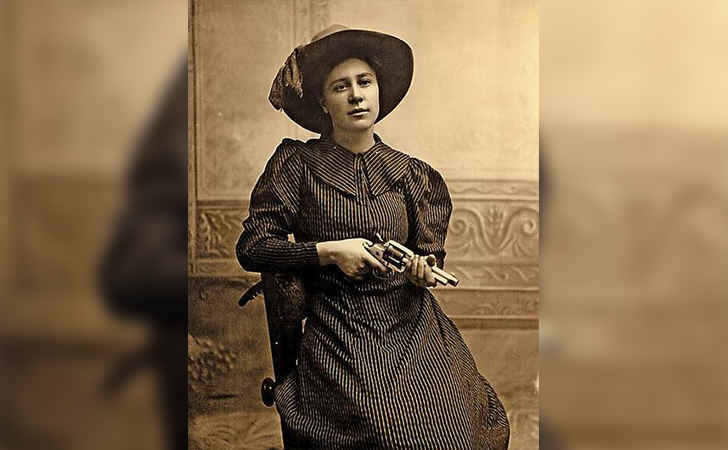
Eleanor Noelle Little / Pinterest
You can tell that Rose was no shrinking violet. In her photo she cradles a gun and smiles confidently into the camera. It is clear that she lived a life of excitement and violence.
O.K. Corral Gun Fight
This iconic photograph depicts the legendary Wyatt Earp with his friend Bat Masterson. He’s best known for his participation in the O.K. Corral gun fight along with his brothers Virgil and Morgan and friend Doc Holiday boldly took on four outlaws.
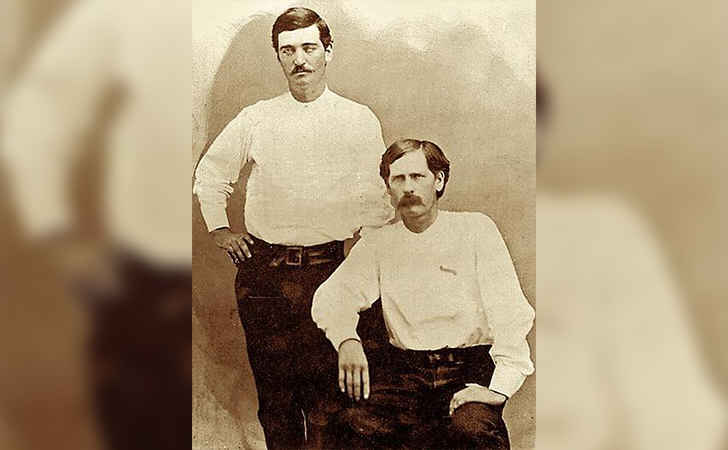
WIkimedia Commons
It seems fairly common to see people from the West staring menacingly into the camera to demonstrate their toughness. These two have matching outfits indicating their partnership.
Greatest Indian Fighter
General George Crook is considered to be one of the greatest Indian fighters in the midst of the Indian Wars. In this 1886 photograph, he appears with his mule Apache and two of scouts Alchesay and Dutchy.
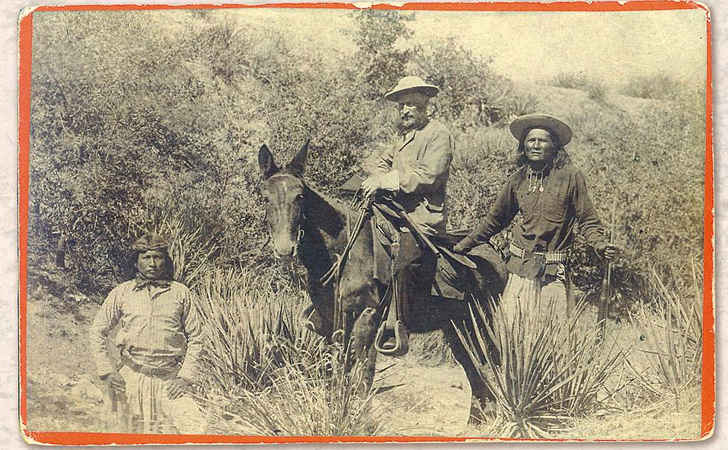
General Crook and Apache Scouts/ True West Magazine
Though the term is “Indian” fighter, a more accurate term today would be Native American. Ya know, because Indians live in India.
America's Best Known Frontiersmen
One of America’s best known frontiersmen, Kit Christopher Carson played a leading role in the development of California. Kit was illiterate, and it’s likely his embarrassment about that led him to spend more time with Natives.

Apic/Getty Images
In total, Kit fathered 10 children with three different wives, two Natives, and one Mexican.
Confederate Bushwacker
Outlaw Jesse James transitioned from a Confederate Bushwhacker into one of the most recognized outlaws to this day. He was taken out when a bounty was put on his head resulting in his murder by another member of his own gang.
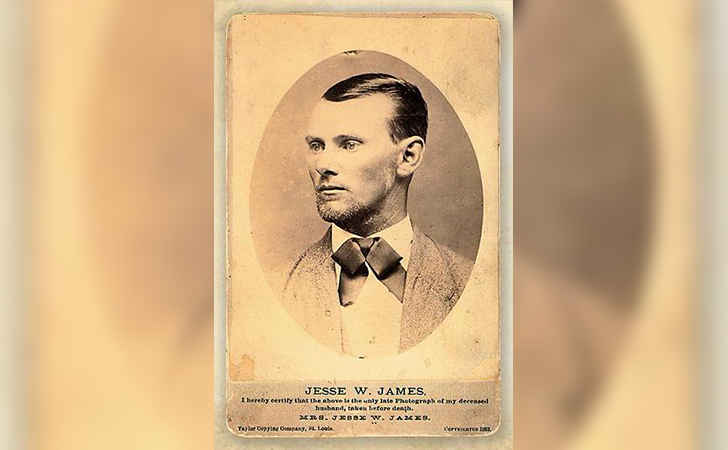
Jesse James / Wikipedia
Jesse James still has a name that lives in infamy into the modern day, and that is quite something given how long ago he lived.
Canyon de Chelly National Monument
This striking image depicts the majestic Canyon de Chelly Nation Monument. Currently, it sits amid the Navajo Nation and is one of the United States most visited national treasure.
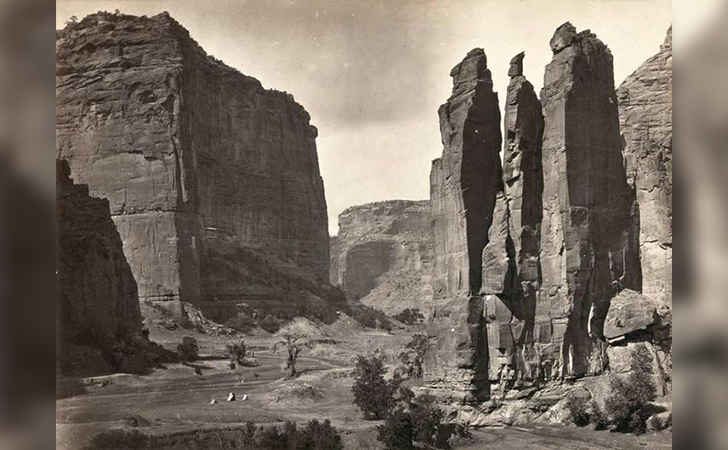
Canyon de Chelly, Arizona, USA / Wikipedia
Its drastic cliffs and expansive views make it one of the most iconic parks in the United States. Fortunately, it still sits with the Navajo nation and they were able to retain some of their original land.
Buffalo Bill’s and His Performers
This image features of group of Buffalo Bill’s cowboy performers for his gun re-enactments. These gentlemen were likely to be the best sharpshooters in the nation at the time, as getting hired wasn’t easy.
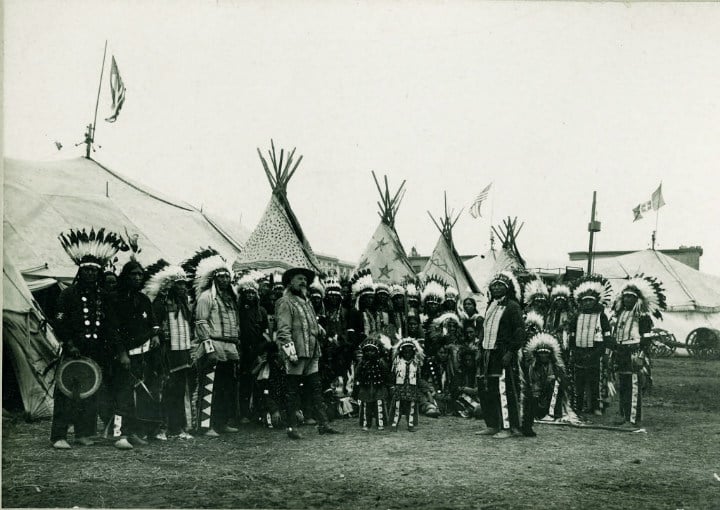
Buyenlarge/Getty Images
However, one getting in, they enjoyed the generous payment for participating in the sow.
Kraemer’s Saloon
This image is of Kraemer’s Saloon in Michigan. What makes this photo so relevant even today is the fact that it shows that bars today are still relatively the same as the saloons 150 years ago.

Wikimedia Commons
When you enter into a dive bar, you essentially get the same look and feel as an old Western bar, which may be a part of their appeal.
Surveying the Lands
This fascinating photo was captured by Timothy O’Sullivan and portrays Lt. George Wheeler along with his crew as they surveyed the lands around the Black Canyon and Colorado River.
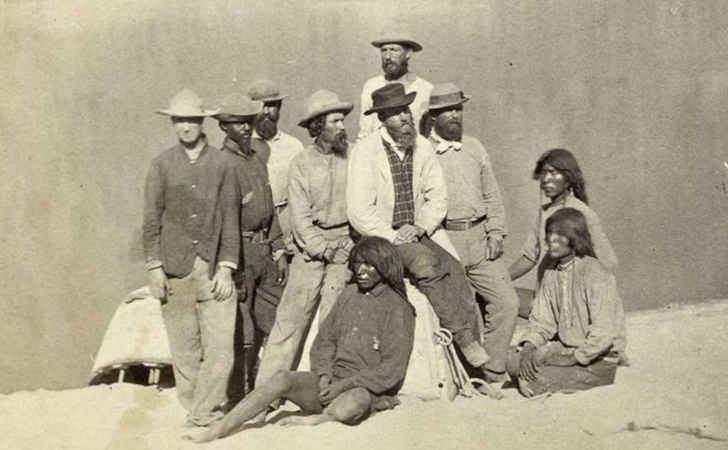
Wikimedia Commons
It also appears that some natives appear in the photo with them. It is hard to know the exact context of the photo, but its vintage feel is very cool.
Battle of Little Big Horn
Prior to being defeated during the Battle of Little Big Horn, Lt. Colonel George Custer searched the Black Hills of South Dakota with his crew to search for an ideal fort location.
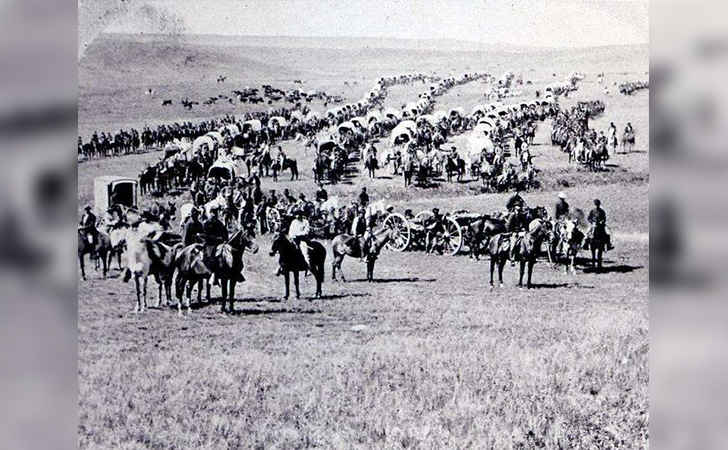
Wikimedia Commons
In this image we can view the hoards of people making their way with horses and wagons, looking for a place to set up camp.
The Largest Reservation in The US
The Navajo Nation may be the largest reservation in the US, but times weren’t easy for them getting there. This pic shows a Navajo family taking a ride across the Canyon de Chelly in the late 1800’s.
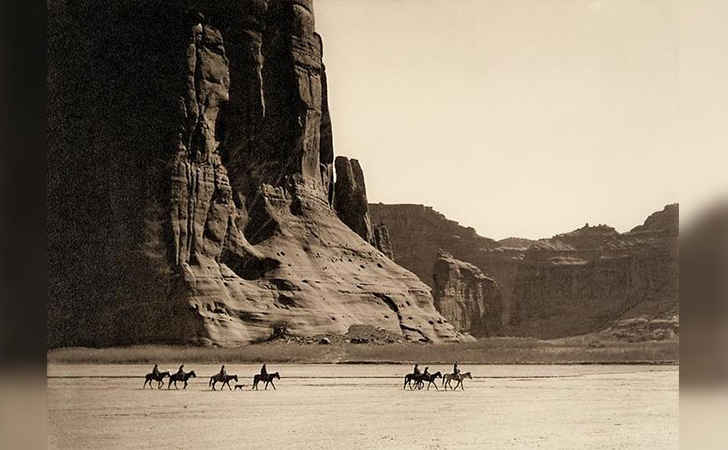
Wikimedia Commons
Few images are more striking and gorgeous than the sepia or black and white photos taken back in the day. Absolutely stunning!
A Hero, Geronimo!
Apache Geronimo is largely considered a hero for leading numerous combined tribes into battle with their Mexican and American foes.
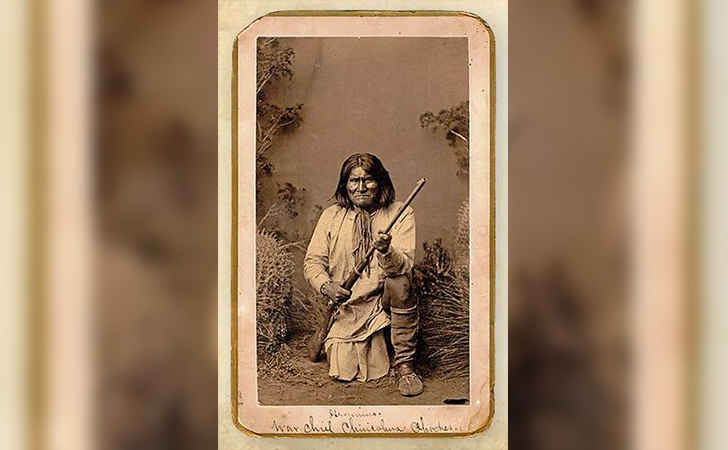
Wikipedia
When you hear a person in the modern day era yell out “Geronimo!” this is the legend that they are referring to.
The Whistleblower
Not only did Charlie Siringo work as a detective at the Pinkerton Detective Agency, he became a whistleblower sharing the agencies darkest secrets.
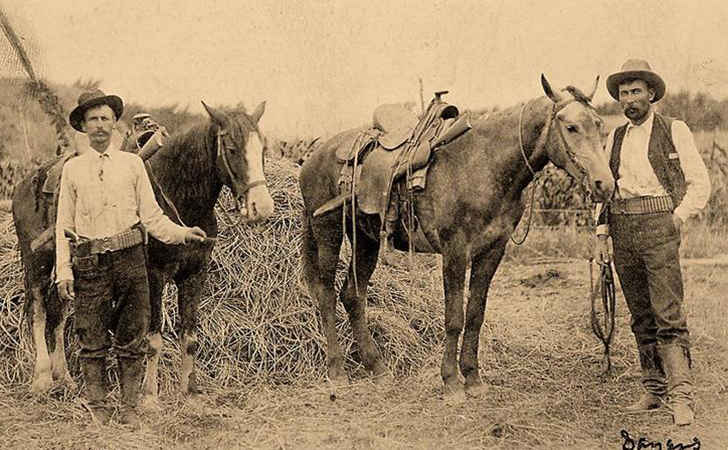
Daily Disclosure
His book “A Cowboy Detective” was a successful and engaging tell-all even though the agency went above and beyond trying to stop him.
Native American Weavers
The colonists were drawn to the lovely weaving of the Native Americans, so they started making rugs and blankets to exchange for goods. Previously, only the tribe had access to such quality weaving.
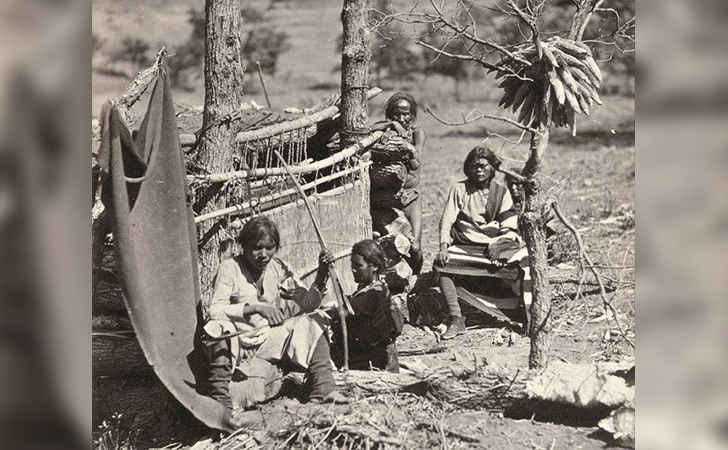
True West Magazine
This type of mercantile exchange is very cool to reflect on. While there was a lot of (well–mostly) devastation brought on by colonization, there was also an exchange of culture and ideas.
Pauite Tribe
This photograph of peoples of the Paiute tribe best depicts the noticeable results of American colonization had on their lives. Here they are seen wearing a combination of Native clothing and western garb.
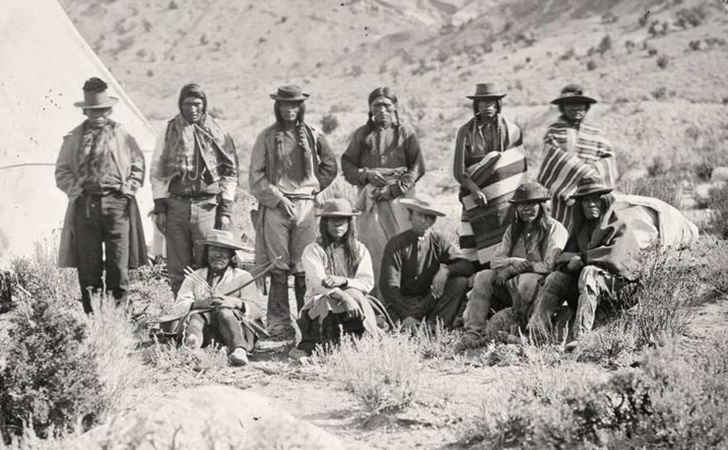
True West Magazine
As mentioned in the slide above, the synthesis of culture mostly affected the Native Americans and it was not done so willingly.
The Most Famous Photographer
Cameras were not commonplace in the Old West, and Timothy H. O’Sullivan ultimately became the most famous photographer of the era. Here, we see his mobile darkroom wagon in the Carson Sink led by mules.
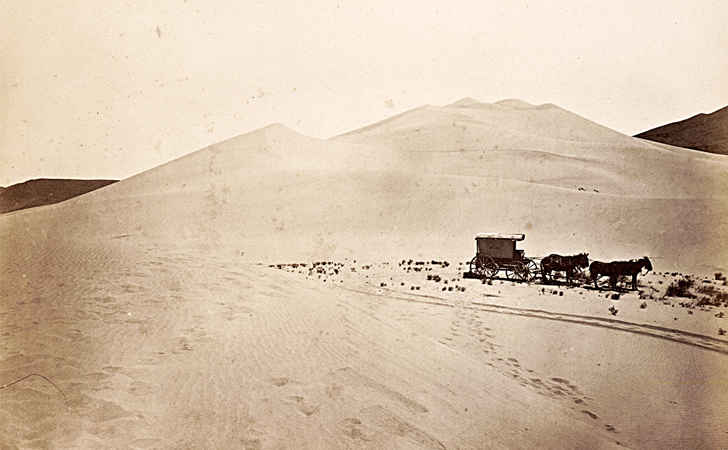
True West Magazine
His camera and darkroom were the keys to his success along with his keen eye for interesting subject matter.
Extreme Temperatures
Even though the temperatures often exceeded 130 degrees in Death Valley, California, businessmen would willingly travel there. Why? Because there were large amounts of borax there that they could mine and sell for big profits.
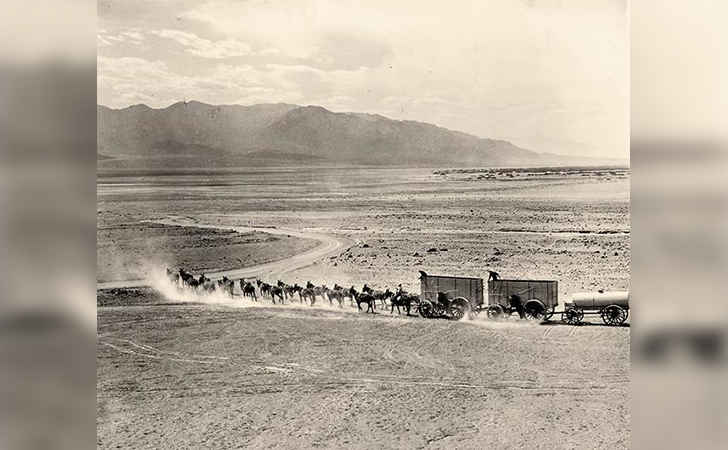
Imgur
Yet another gorgeous and expansive photo to show the Western plains in a way any of us will ever see again.
Deadwood
Situated in Dakota Territory, Deadwood hosted a huge celebration as captured in this photo by John Grabill after the completion of the city’s streetcar project and the Deadwood Central Railroad.
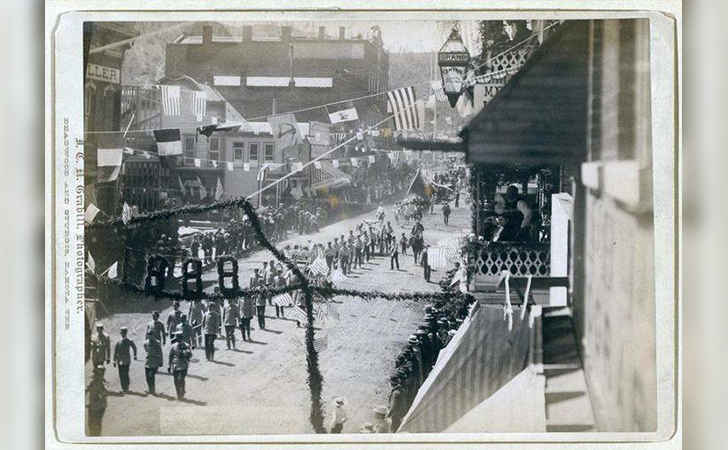
Big Picture
At the time, completing a railroad was a very big deal. The type of labor that was expected was mostly manual labor and took a great long while to complete.
Wild West Cowboy
If you’ve ever wondered what a true Wild West cowboy looked like, this depiction of Charlie Nebo is extremely accurate. He was known as a true frontiersman amid his peers.
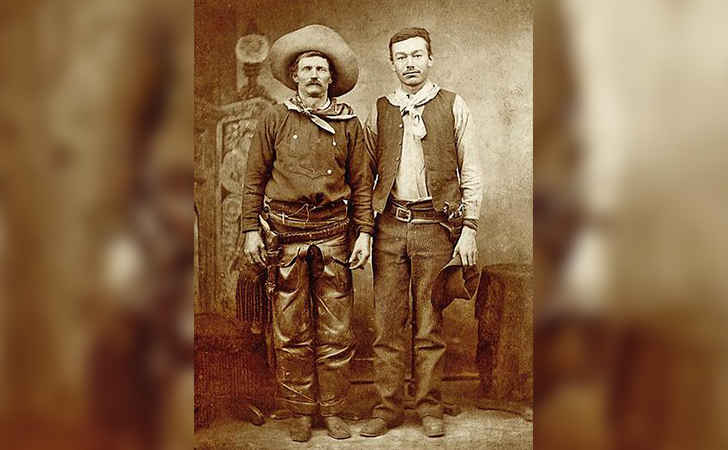
Daily Disclosure
The men pose seriously for the camera in their cowboy garb and gear. Yet another example of the timeless photography that came out of the Old West.
Bloody Bill
There was gang involvement during the Civil War, and Bloody Bill was known as the savage leader of Quantrill’s Raiders. As a Confederate, he and his gang would take out as many Union soldiers as possible when given an opportunity.
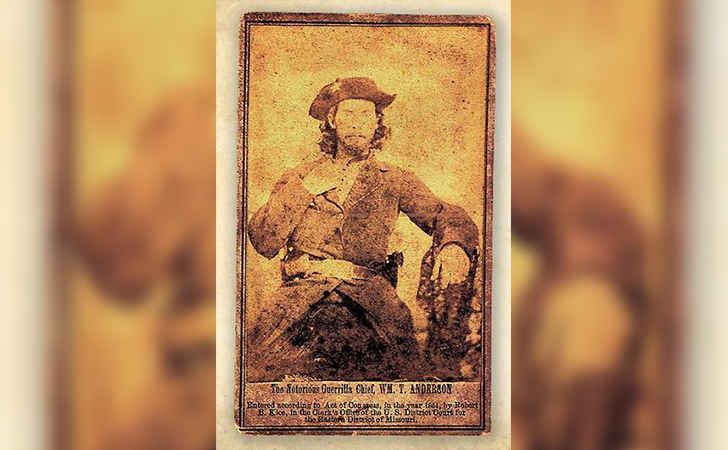
True West Magazine
He and his gang reportedly took out more than 100 soldiers in one engagement.
Ambrotype Photography
A decade before tintype photography people used ambrotype, which is done on glass. This image is a pristine example of early ambrotype photography.
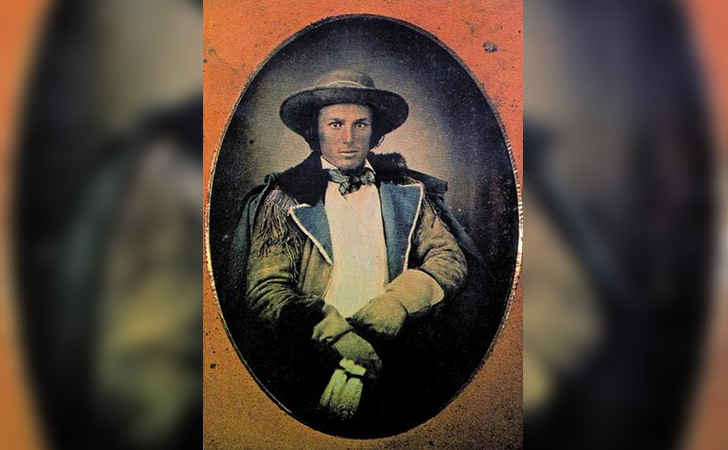
True West Magazine
The goal was to add color to photographs in a world that was only black and white once the film was developed.
Unidentified Tribe
In this tintype photograph from 1870, we see an unidentified member of the Cherokee tribe who are one of the Five Civilized Tribes that were relocated onto Indian Territory.
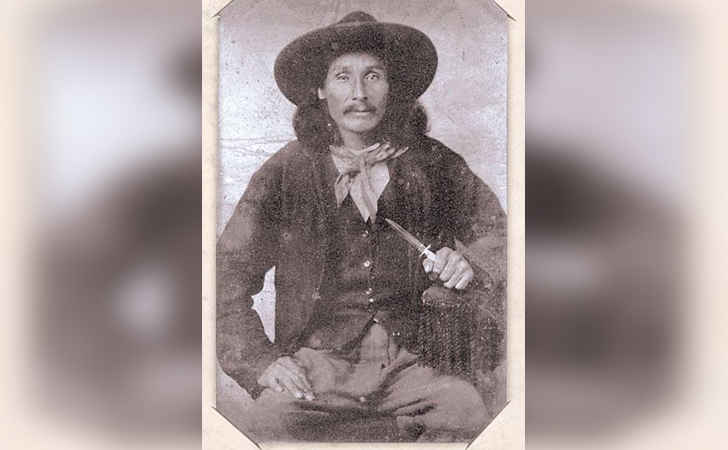
True West Magazine
Here we see a man holding a golden hued knife and donning the clothing only typical at that time of the ‘civilized’ white man.
Buffalo Bill’s Wild West Show
Born William Cody, Buffalo Bill created a highly popular entertainment program known as the “Wild West Show.” It began in 1883 and went on successfully for many decades as the show toured the states and wowing them with gun fight reenactments and other acts.

True West Magazine
This image shows a group of his performers who traveled with show. You can see that the Native Americans were made to wear their headdresses (which are typically for formal ceremonies and worn by the kings of the tribes), so one can imagine how humiliating and strange this was for the Natives in the photo.
The Most Dangerous Trail
As seen in the photo of a group traversing the steep and dangerous Sierra Nevada Mountain Trail, travel wasn’t easy for all early settlers. In fact, the wealthy would hire an armed group to protect themselves and their valuables on risky routes such as this one.

True West Magazine
Walking along the side of the bluff would be scary enough. Adding on horses and wagons would be enough to make most of us turn around, but such was the Wild West.
Tibercio Vasquez
Tibercio Vasquez was a hispanic outlaw that went on a 20 year crime spree without getting caught. His luck ran out in 1875 when authorities caught him and had him hung.
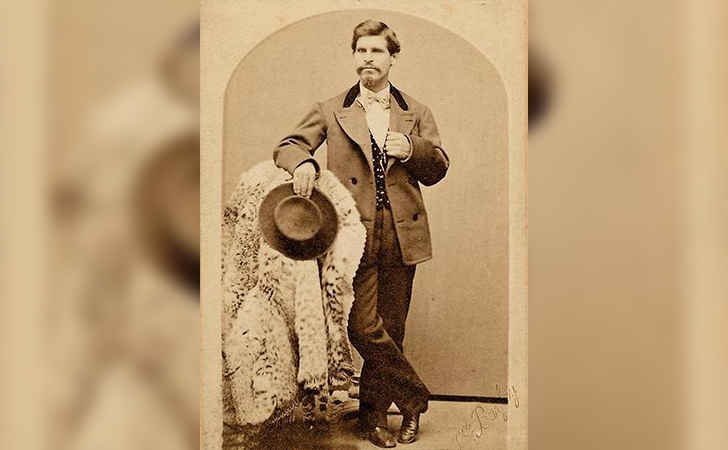
Daily Disclosure
In a day of paper “wanted” papers, maybe Tibercio was lucky, or maybe he was really that good.
Chasing Money
Chasing money was vital in the wild west, and gold was the most prized metal that people would chase and mine. This Timothy O’Sullivan photo shows an Illinois railway track that transported their finds out of the mines, saving the men a lot of time and hard work.
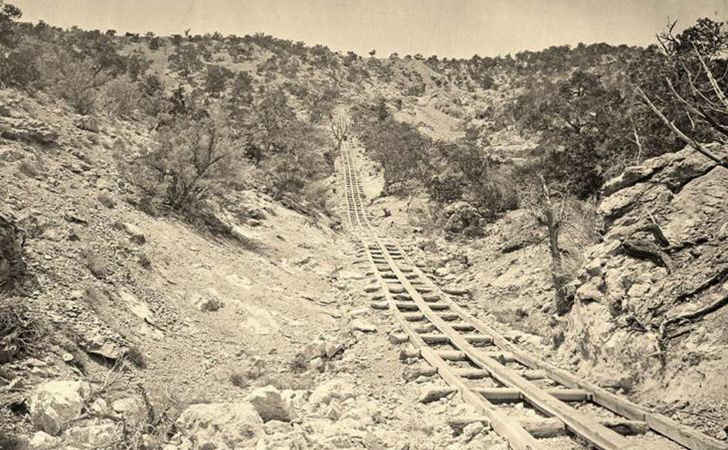
True West Magazine
When a person hears the word “Eureka!” this is a hold over (a gold-over?) from the Gold Rush days, when people would yell it in a fit of joy.
The Pacific Railroad
Taking six years to create during the Civil War, The Pacific Railroad connecting San Francisco to Iowa laid the foundations for a transcontinental railroad to foster transportation.
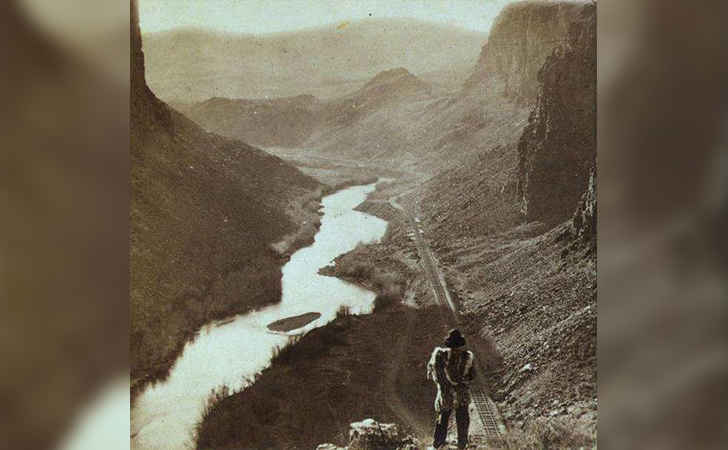
This was a complete game changer in the United States, connecting the very large country from the West Coast to the Midwest. This made trade, travel, and most everything way easier.
Female Stagecoach Robber
Pearl Hart wasn’t a woman to be messed with in the wild west, and she gain notoriety due to her proclivities as a female stagecoach robber.
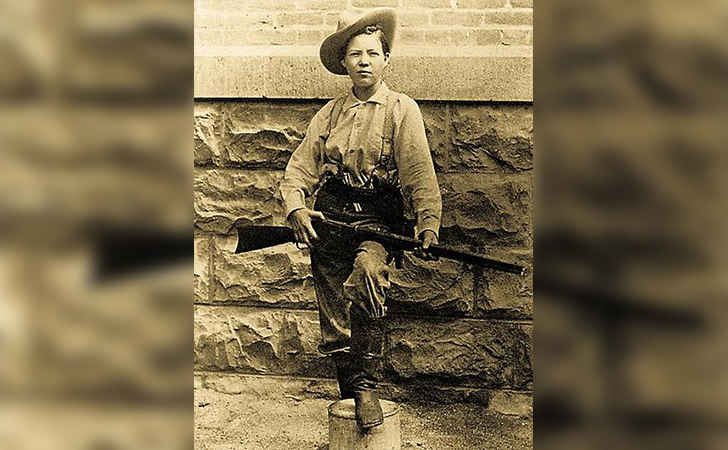
True West Magazine
She often passed for a man, as she had short hair, dressed in men’s clothing and carried a big gun. Ultimately, she was sentenced to prison for five years for her crimes.
Bandits of the Wild West
It’s unknown who the men are in this photo, as there were numerous gangs amid the wild west. What is known is that they are one of those gangs, so experts suggest that the man in the center is John Kinney.
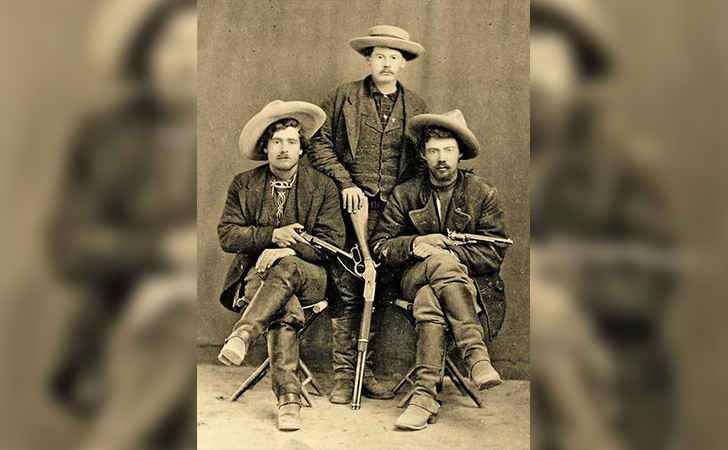
True West Magazine
If this is true, this photo would depict members of the John Kinney Gang.
Buffalo Bill’s Grass Dancers
Another popular attraction at Buffalo Bill’s show were watching the grass dancers. These two Oglala Lakota Natives traveled the world wearing their native bells and shells to entertain show-goers. This photo is of dancers know as Elk and Black Elk.
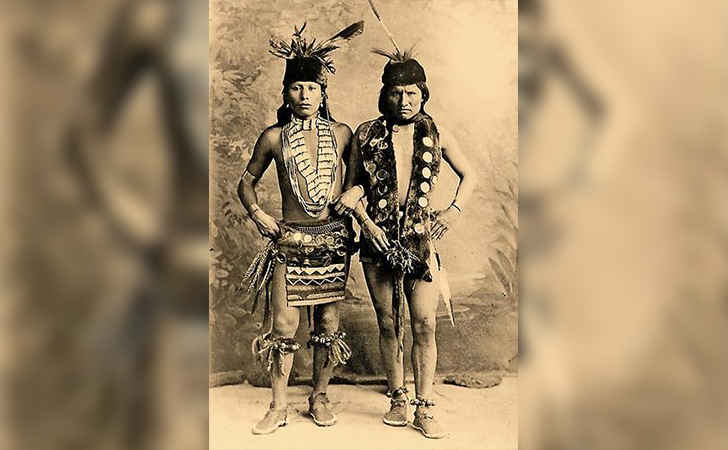
Daily Disclosure
As stated before about the men in headdresses, the Natives were displayed like circus animals and shown to people who had no experience with them. They were often referred to as “savages”.
Texas Rangers
The Texas Rangers were founded in 1836, and even though they were protectors of the people they had to purchase their own weapons and ammunition to get the job done. Rather than receiving money as payment, they were granted property.

True West Magazine
In that day and age, property meant a lot (as it does today, but in a different sense). Property was something only white men were allowed to own and gave them a lot of privileges within the United States.
Wild Bill Hickock
Known for being an excellent shot with the fastest holster to hand speed, Wild Bill Hickock is rumored to have taken the lives of more than 100 individuals.
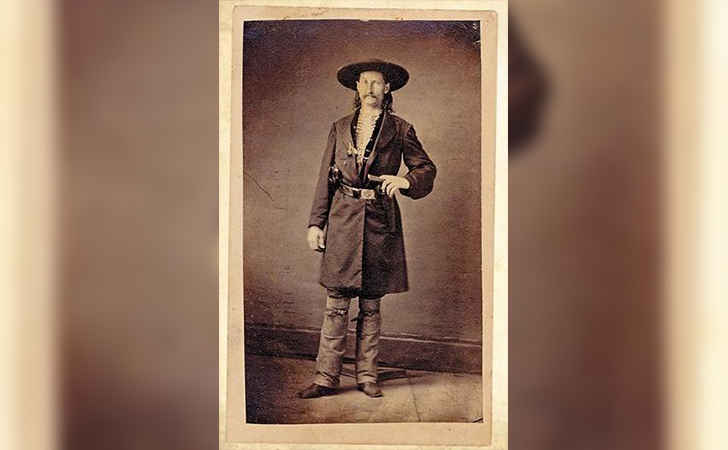
True West Magazine
However, it is believed that he only actually killed less than a dozen men.
Dangerous Job
Here, we see a group of men in front of a cave-like entrance in the late 1800s. Their goal was to mine for gold, copper or silver in hopes of reaping big payouts in addition to the mine owners when they found the goods.

True West Magazine
This was a dangerous job, but these men were willing to take the risk.
Early Texas Rangers
Many people don’t know that the early Texas Rangers were not Texans nor were they outlaws—they were Comanches. In this image from 1868 we see John J. Haynes on the right and James Thomas Bird on the left.
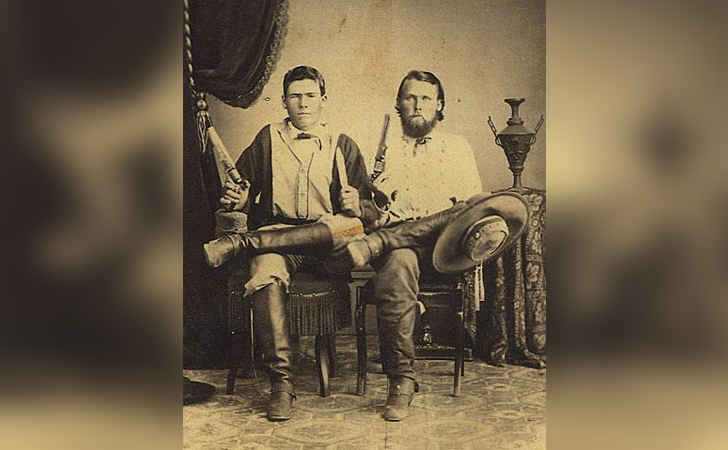
Triangle Crunch
Interestingly, their attire resembles that of Civil War guerrillas, which severely contrasts with the cowboy attire of latter Texas Rangers.
John Grabill, Wild West Photographer
Known for his stunning photography of Wyoming, Colorado and South Dakota during their development, here we see wild west photographer John Grabill.
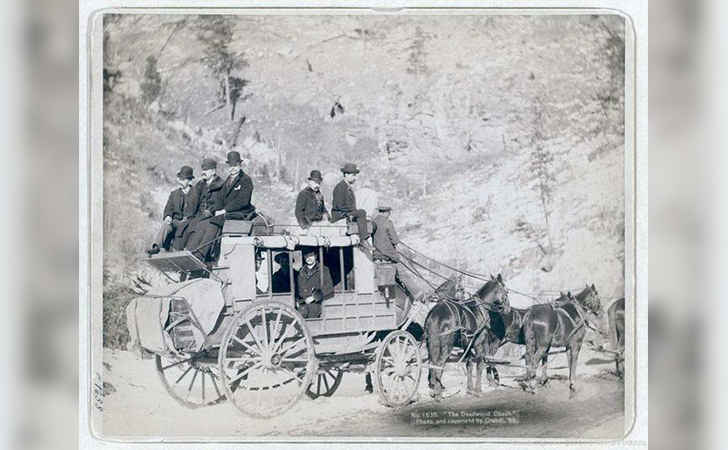
True West Magazine
He also shot pictures of the plights of the Native Americans post colonization.
White Settlers
Once white settlers came in and European colonization took hold, Native life as they knew it ended. Native’s were forced off their lands so settlers could have it, sending the earliest peoples away to the west to live in paltry conditions on makeshift reservations.
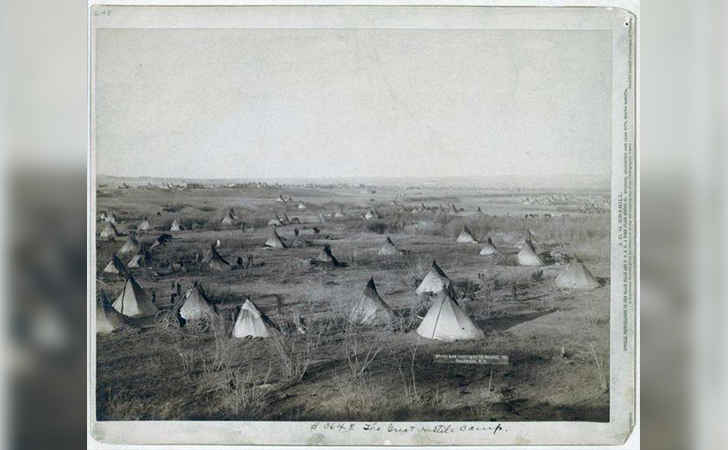
Daily Disclosure
This would lay the groundwork for the entirety of the United States, with Natives being pushed and culled into small spaces so settlers could reform the land in their mind’s eye.
Buffalo Soldier
Black American’s who opted to serve in the US Army were dubbed Buffalo Soldiers by Native Americans. The term was popularized by reggae legend Bob Marley. In 2005, the last living Buffalo Soldier passed away at the incredible age of 111.
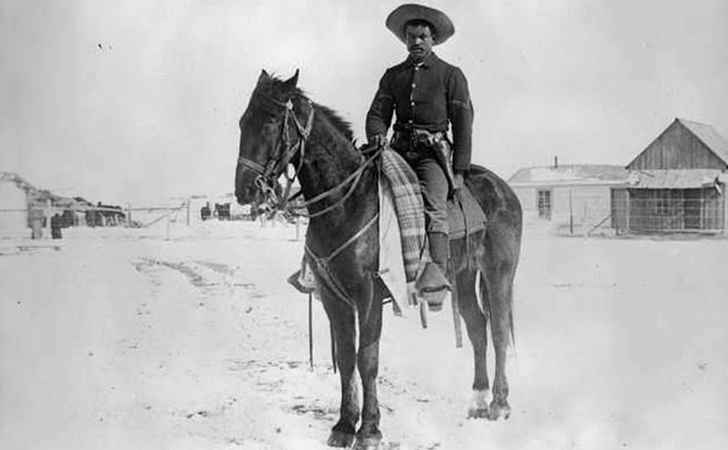
Tumblr
Most of us are aware of the context of subjugation that black Americans faced, so it was especially fascinating to see black soldiers take American service under their wing.
Fugitive On the Run
This double image is the initial wanted dead or alive poster seeking fugitive Bill Doolin. Next to it, we see the man’s dead body once bounty hunter Marshal Heck Thomas caught up to him and killed him with 20 buckshot wounds.
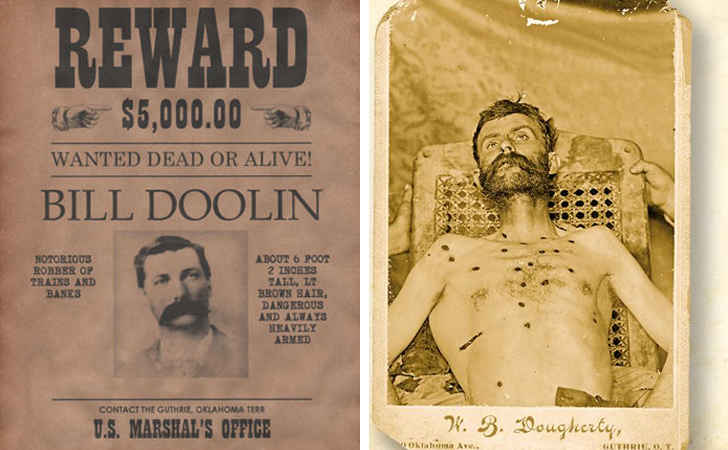
True West Magazine
While it wouldn’t be acceptable today, bounty hunters often took such photos to prove they had done the job.
The Dalton Gang
Once respected lawmen who were tired of not getting compensated for their work, the Dalton brothers formed their own gang and turned to the ‘bad’ side of the law. Best known for robbing banks and trains, they finally ran out of luck in 1892 during a bank robbery in Coffeyville, Kansas.
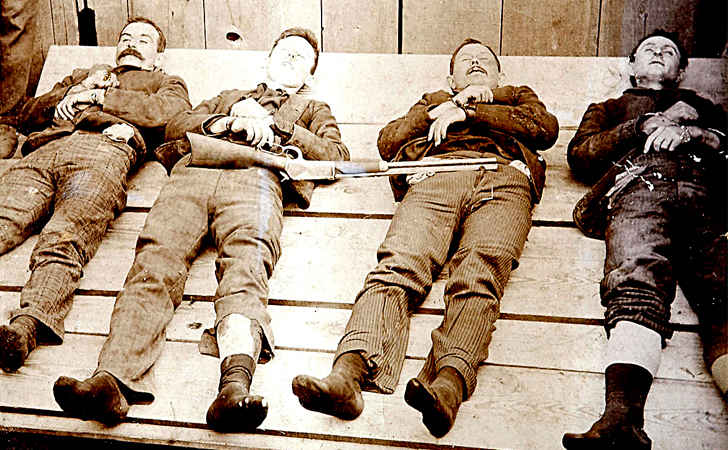
True West Magazine
Two brothers died when their scheme went amiss, but the brother Emmett took 23 bullets and miraculously managed to survive only to serve 14 years in prison.
Chinese Immigrants
Chinese immigrants were often put into concentration camps and later forced into cheap free labor to build railroads. Not only did they make less than half the wages of white workers, they were forced to buy their own food and transport their camps when non-Chinese workers had these necessities supplied for them.
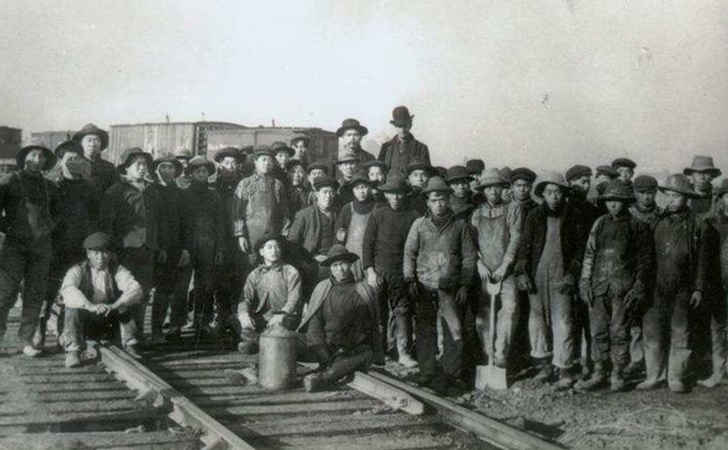
True West Magazine
Here, we see a group of Chinese laborers. It is often lost in history the amount of labor that Chinese immigrants put into the creation of our railway systems.
Settling Utah
This is a panoramic image by Timothy O’Sullivan showing the growth of the community of Little Cottonwood, Utah. In the wild west, these settlements made life much easier and safer than being on the frontier.
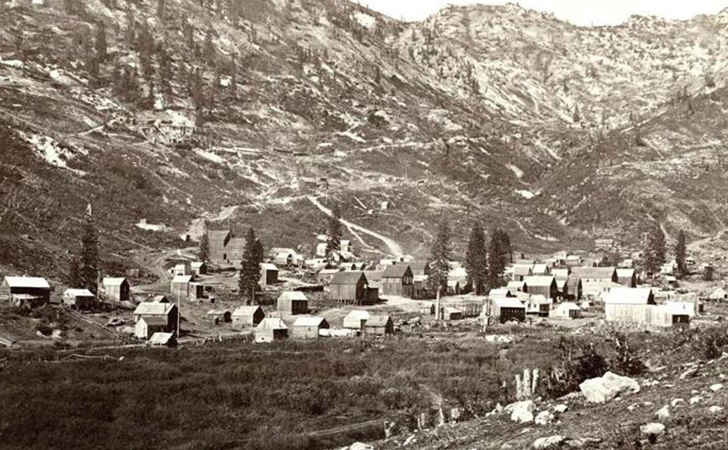
True West Magazine
Naturally, settlements turn into towns and the entire idea of colonization and the settler’s dreams could be realized.
Holding Their Catch
In this 1887 photo, we see five extremely pleased cowboys holding onto their catch: a gray wolf. These animals were considered predators due to their proclivity to kill cattle, so capturing one was considered a brag-worthy accomplishment.
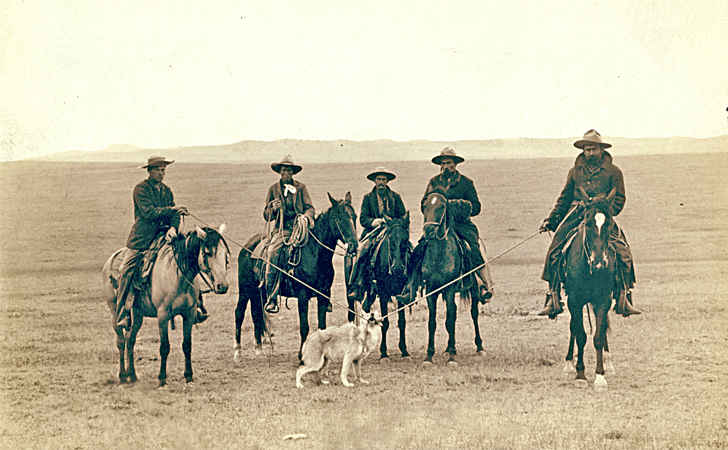
True West Magazine
While it does make us sad to see a beautiful creature gagged and held for its natural inclinations, this photo does represent the push between predator and prey and represents a time far away from where we are today.
Another Cowboy Posing
This cowboy seems eager to pose for this solo picture, and it is rumored that most cowboys were eager to have their image captured on film. Likely, this is why the cowboy here is in full regalia replete with his chaps, hat, and gun.
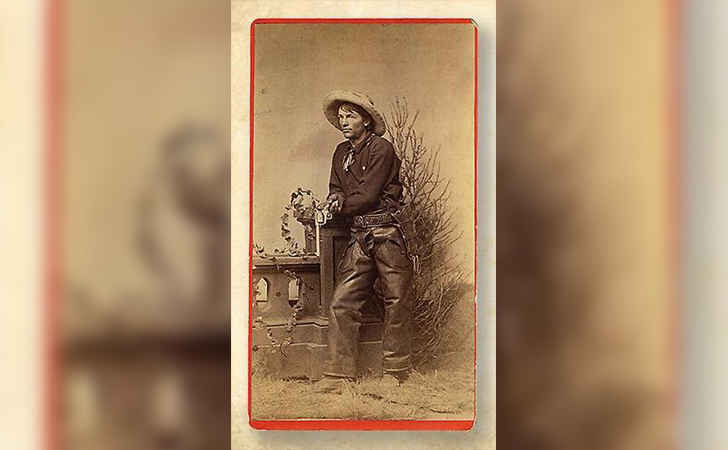
True West Magazine
The way the cowboys pose indicate that they wanted to be remembered with pride.
Warrior and Chief
Quanah Parker was a highly respected warrior and chief of the Comanche tribe. Best noted for his high level of aggressiveness and bravery, he became a leader at a young age. Here, he proudly wears a full headdress and holds a bottom-up lance.
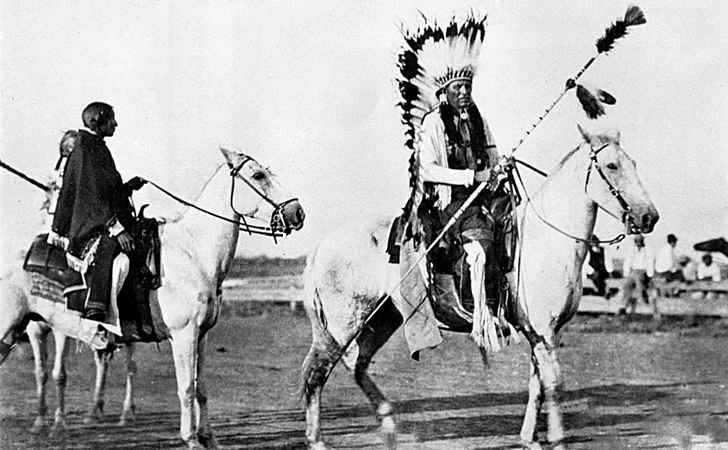
Grizly
This gives the reader an indication of the pride that a leader wore his head dress with, similar to that of the cowboy, except if the cowboy was higher in the hierarchy of their group.
General Custer
While General Custer is best known for his defeat in the Battle of Little Big Horn, he was notably a great soldier who served in many wars. The image here was taken just prior to his passing.
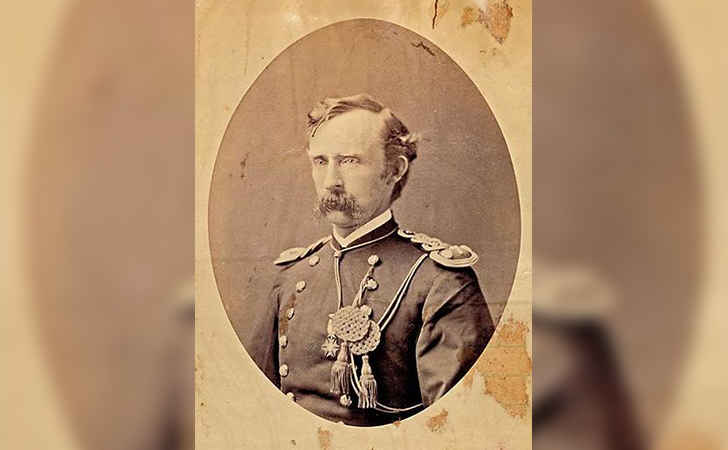
Daily Disclosure
You can see his awards hanging boldly on his chest and solenm expression with which he poses.
Ned Christie
Cherokee statesman Ned Christie had a reputation for taking on the lawmen in the Americas. So much so that these engagements were dubbed as ‘Ned Christie’s War.’ He was accused of many crimes wrongfully and put on trial.
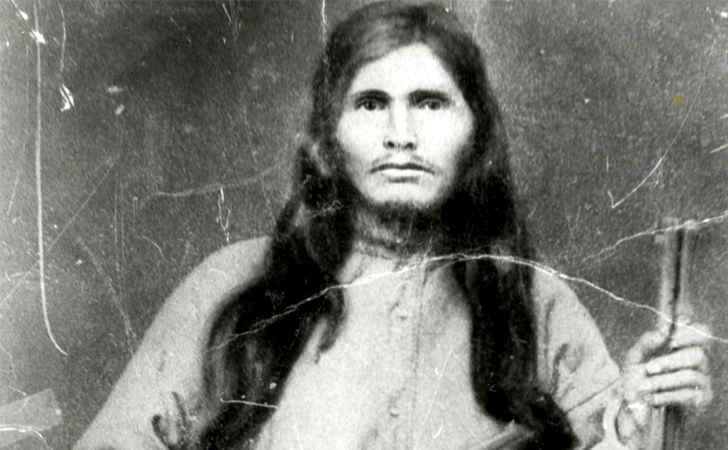
Grizly
Even though he was proven innocent in a trial, his home was destroyed by fire by incited law men in 1892. Three years later, the lawmen revisited Ned Christie and killed him.
Terry’s Texas Rangers
Formed in 1861, Terry’s Texas Rangers were a highly respected and successful calvary regiment fighting for the Confederates during the Civil War. At least 275 engagements called them to battle, and the group was dissolved in 1865.
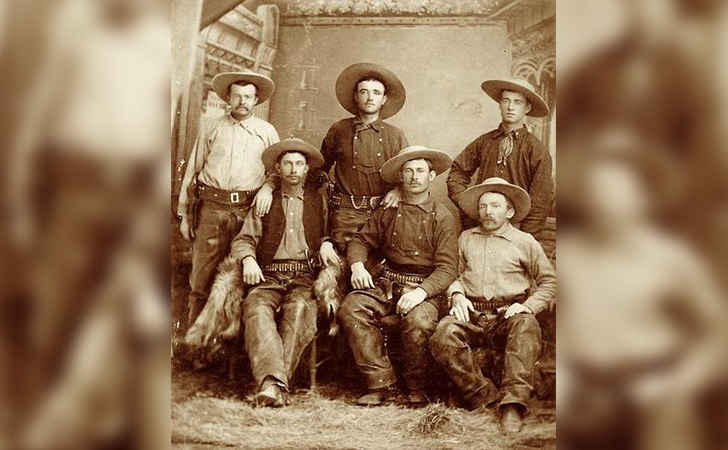
Youtube
For those unaware, the Civil War ended in 1865. Hence why the group was dissolved when the Confederates lost the war and slavery was made illegal.
Bathing in the Wild Wild West
It simply wasn’t feasible to bathe daily in this era, and there were actually wives tales that claimed sickness was due to taking a bath!
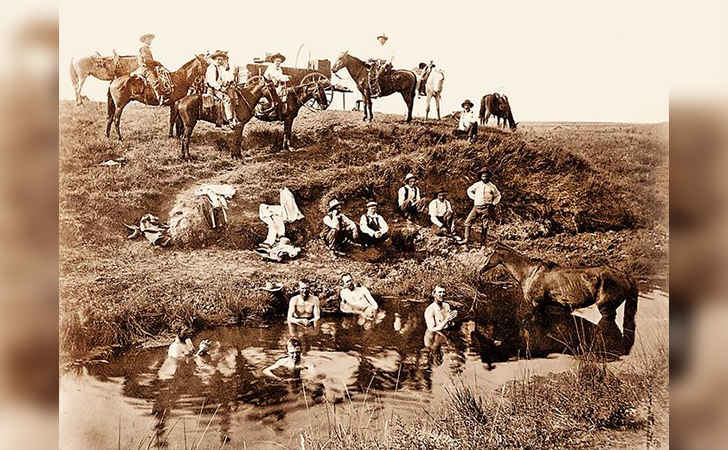
Daily Disclosure
While men often stopped at water pools such as the one we see in the image, women often took pitchers of water and a cloth to clean up.
Female Gaining Fame
Another female who gained fame for being a female outlaw was Belle Star. Born Myra Maybelle Shirley Reed Star, she could often be seen riding sidesaddle and toting two pistols. She was murdered in 1889 by an unknown party.
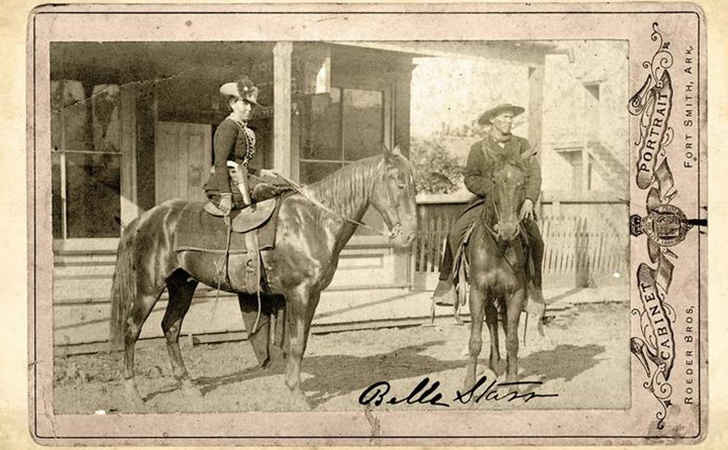
Daily Disclosure
Side saddle was a more common way for a woman to sit on a horse, considered more lady-like. Even as an out-law, she retained her expectations of Western society.
Spotted Elk Found
This haunting image of Spotted Elk is a rare find. He was a Lakota Sioux also known as Big Foot, and he was killed by Union soldiers in 1890 at the Wounded Knee Massacre. Unfortunately he was only one of 153 Native casualties in the battle.
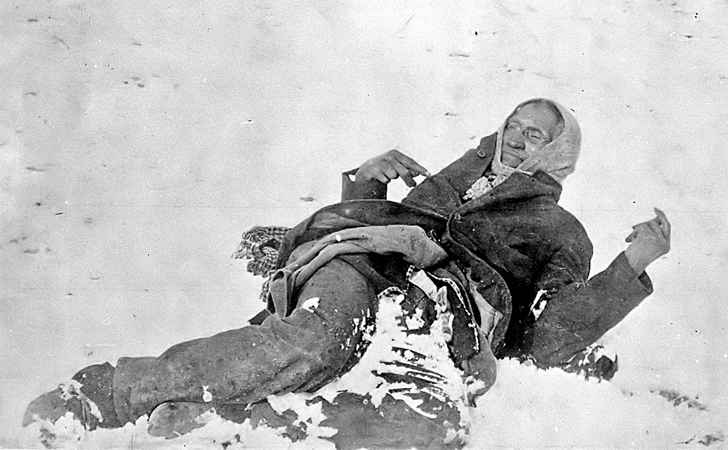
WIkimedia Commons
It appears that his corpse froze to death and then reappeared once the troops took stock of the casualties.
